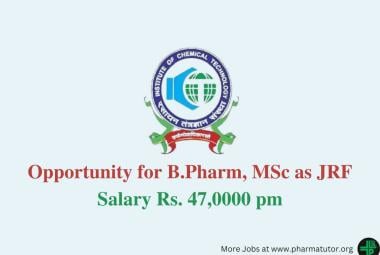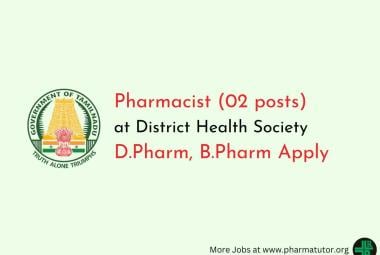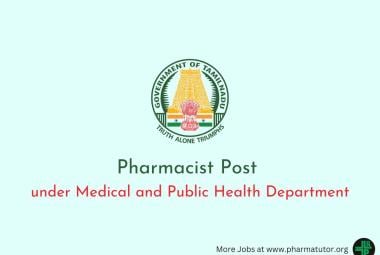{ DOWNLOAD AS PDF }
ABOUT AUTHORS:
Samatha.M*, Deepthi.P, N. Srinivas
Department of pharmaceutics,
Malla Reddy Institute of Pharmaceutical Sciences, Secunderabad
samathamapashetti@gmail.com
ABSTRACT
In the present study, an attempt was made to formulate the oral sustained release matrix tablets of Ambroxol HCl in order to improve the efficacy, reduce the frequency of administration, and better patient compliance. Ambroxol Hydrochloride is a potent mucolytic agent which induces bronchial secretions used in the treatment of respiratory disorders. FTIR analysis confirmed the absence ofany drug polymer interaction. Sustained release tablets of Ambroxol Hydrochloride were formulated employing hydrophilic polymers HPMC K4M and HPMC K100M. The powder blend was evaluated for micromeritic properties. The sustained release tablets were prepared by wet granulation method. The tablets were evaluated for thickness, weight variation test, hardness, friability, and drug content. The in vitro drug release characteristics were studied in simulated gastric fluid (2 hours) and intestinal fluid for a period of 10 hours using USP type II dissolution apparatus (total 12hours). The results of dissolution studies indicated that formulation F11 is the most successful of the study with satisfactory drug release. At the end of 12 hrs, the drug release was found to be 96.1%.
INTRODUCTION
Oral route is one of the most popular routes of drug delivery dueto patient acceptance, ease of administration, accurate dosing, cost effective manufacturing methods, as well as traditional belief that by oral administration the drug is as well absorbed and to the fact that gastrointestinal physiology offers more flexibility in dosage form design than most other tablets 1, 2.
Sustained release drug delivery aimed at controlling the rate of release as well as maintains desire drug level in the blood that is therapeutically effective and non toxic for extended period of time, thus achieving better patient compliance and allowing a reduction of both the total dose of drug administered and the incidence of adverse side effects. It provides prolonged but not necessarily uniform release of the drug. The rationale for development of a sustained release formulation of a drug is to enhance its therapeutic benefits, minimizing its side effect while improving the management of the diseased condition 3, 4.
Ambroxol is a metabolite of bromhexine with similar actions and uses. It is chemically described as Trans-4-[(2-amino-3, 5-dibromobenzyl) amino]-cyclohexanol. Ambroxol hydrochloride is an expectorant improver and a mucolytic agent used in the treatment of respiratory disorders such as, bronchial asthma, chronic bronchitis characterized by the production of excess or thick mucus.
Ambroxol hydrochloride has also been reported to have a cough suppressing effect and anti inflammatory action. It has been successfully used for decades in the form of its hydrochloride as a secretion releasing expectorant in a variety of respiratory disorders. Its short biological half life (4 hrs) that calls for frequent daily dosing (3 to 4 times) and therapeutic use in chronic respiratory diseases necessitates its formulation in to sustained release dosage forms 5, 6.
MATERIALS AND METHODS
Ambroxol Hydrochloride was received as a gift sample from Richer Pharmaceuticals Ltd, Hyderabad, HPMC K4M &HPMC K100M, MCC,Starch, Talc and Mg stearate were obtained from Drugs India Ltd, Hyderabad.
Equipment
Double rotary tablet compression machine (karnavati, Rajasthan), Electronic balance (Shimadzu), Vernier caliper (Mitutoyo south Asia pvt ltd.), Hrdness tester (Pfizer), Friabilator (Roche), PH meter (EI), Hot air oven (MiniconEquipmentsPvt Ltd.), Dissolution Apparatus (LAB INDIA), UV spectrophotometer (Shimadzu 1800), FT-IR spectrophotometer (Shimadzu).
Methodology
Tablets were prepared by wet granulation method. Various steps (Sieving, Dry mixing, Preparation of binder solution, Granulation, wet mass sieving, Drying, sieving of dried granules and finally compression after addition of lubricants) involved in wet granulation method.
Micromeritic properties
The physical mixture of the drug with different excipients was prepared by triturating drug and additives in a dried mortar for 5 min.
Angle of repose
The angle of repose was determined by the funnel method. The accurately weighed powder blend was taken in a funnel. The height of the funnel was adjusted in such a way that the tip of the funnel just touched the apex of the heap of powder. The powders were allowed to flow through the funnel freely onto a clean surface. The diameter of the powder cone was measured and angle of repose was calculated using the following equation9.
tan θ = h/r
where h is the height of powder cone and r is the radius of the powder cone.
Bulk density and tapped density
An accurately weighed powder blend from each formula was lightly shaken to break any agglomerates formed and it was introduced into a measuring cylinder. The volume occupied by the powder was measured which gave bulk volume. The measuring cylinder was tapped until no further change in volume was noted which gave the tapped volume. Both bulk density (BD) and tapped bulk density (TBD) of powder blends were determined using the following formulae10.
BD = Weight of the powder/Volume of the powder
TBD = Weight of the powder/Tapped volume of the powder
Carr’s compressibility index
The compressibility indices of the formulation blends were determined using following Carr’s compressibility index formula11.
Carr’s Compressibility Index (%) = [(TBDBD)/ TBD] x100
Hausner ratio
Hausner ratio is the ratio between tapped density and bulk density.
Hauser’s ratio = Tapped density/poured density.
Hausner ratio less than 1.25 indicates good flow properties while Hausner ratio greater than 1.5 shows poor flow of powder. Hausnersratio between 1.25 to 1.5 can be improved by addition of glidants12.
Granulation of Ambroxol:
Sieving: The active ingredient Ambroxol was passed through the sieve#40 followed by the other ingredients were passed the same sieve.
Dry mixing: Ambroxol, HPMC K100M, HPMC K4M, MCC were taken and mixed for 5minutes to ensure uniform mixing of the ingredients with the drug.
Preparation of binder solution: Weigh 9mg of Starch accurately and it is mixed with warm water to form a paste. It is used as binder solution.
Granulation: The binder solution was added slowly to the dry mixed ingredients with constant mixing till to get solid mass to form uniform and optimum granules.
Drying: Then the wet granules were dried in trays and pass the air for drying since the IPA is corrosive and also get evaporated quickly. So air drying is only suitable for drying, samples were removed randomly at different time intervals from the total bulk of the granules.
Sieving: The dried materials were passed through the sieve#20.Then desired amount of blend was compressed using 8mm punch in Double rotary tablet compression machine (karnavati, Rajasthan).
FORMULATION OF AMBROXOL HYDROCHLORIDE SUSTAINED RELEASE TABLETS
Table 1: Trial with HPMCK4M
|
Ingredients |
F1 |
F2 |
F3 |
F4 |
|
AmbroxolHcl |
75 |
75 |
75 |
75 |
|
HPMC K4M |
45 |
60 |
75 |
90 |
|
MCC |
162 |
147 |
132 |
117 |
|
Starch |
9 |
9 |
9 |
9 |
|
Water |
q.s |
q.s |
q.s |
q.s |
|
Talc |
6 |
6 |
6 |
6 |
|
Mg.stearate |
3 |
3 |
3 |
3 |
Table 2: Trial with HPMCK100M
|
Ingredients |
F5 |
F6 |
F7 |
F8 |
|
AmbroxolHcl |
75 |
75 |
75 |
75 |
|
HPMC K100M |
45 |
60 |
75 |
90 |
|
MCC |
162 |
147 |
132 |
117 |
|
Starch |
9 |
9 |
9 |
9 |
|
Water |
q.s |
q.s |
q.s |
q.s |
|
Talc |
6 |
6 |
6 |
6 |
|
Mg.stearate |
3 |
3 |
3 |
3 |
Table 3: Trial with HPMC K4M &HPMCK100M
|
Ingredients |
F9 |
F10 |
F11 |
F12 |
|
AmbroxolHcl |
75 |
75 |
75 |
75 |
|
HPMC K4M |
45 |
45 |
21 |
42 |
|
HPMC K100M |
45 |
45 |
84 |
63 |
|
MCC |
117 |
115 |
102 |
107 |
|
Starch |
9 |
9 |
9 |
9 |
|
Water |
q.s |
q.s |
q.s |
q.s |
|
Talc |
6 |
6 |
6 |
6 |
|
Mg stearate |
3 |
3 |
3 |
3 |
Table 4: Results of study of Physical Parameters of powders
|
Formulation |
Angle of Repose (0) |
Bulk Density (LBD)(g/ml) |
Tapped Density (TBD)(g/ml) |
Carr’s index% |
Hausner ratio |
|
F1 |
21004 |
0.304 |
0.351 |
13.41 |
1.15 |
|
F2 |
21009 |
0.317 |
0.367 |
13.63 |
1.16 |
|
F3 |
21046 |
0.310 |
0.360 |
13.89 |
1.16 |
|
F4 |
24088 |
0.318 |
0.378 |
15.87 |
1.19 |
|
F5 |
24023 |
0.294 |
0.346 |
15.02 |
1.18 |
|
F6 |
24009 |
0.307 |
0.360 |
14.72 |
1.17 |
|
F7 |
24078 |
0.311 |
0.368 |
15.21 |
1.18 |
|
F8 |
25056 |
0.265 |
0.312 |
15.06 |
1.18 |
|
F9 |
23098 |
0.332 |
0.391 |
14.91 |
1.18 |
|
F10 |
21014 |
0.299 |
0.346 |
13.54 |
1.16 |
|
F11 |
22053 |
0.270 |
0.317 |
14.63 |
1.17 |
|
F12 |
24096 |
0.282 |
0.336 |
15.82 |
1.19 |
Table 5: Results of study of physical parameters of tablets
|
Formulation |
Uniformity of Weight mg ± SD (n=20) |
Hardness Kg/cm2 ± SD (n=10) |
Thickness mm ± SD (n=5) |
Friability (%) |
Drug content (%) |
|
F1 |
301±1.25 |
7.4±0.32 |
1.5±0.055 |
0.435 |
98.70 |
|
F2 |
301±1.21 |
8.4±0.29 |
1.7±0.010 |
0.492 |
99.25 |
|
F3 |
301±0.15 |
8.9±0.24 |
1.4±0.017 |
0.501 |
99.42 |
|
F4 |
300±3.28 |
8.3±0.41 |
1.3±0.012 |
0.963 |
97.52 |
|
F5 |
301±0.98 |
8.1±0.32 |
1.5±0.072 |
0.478 |
98.24 |
|
F6 |
299±2.32 |
7.8±0.32 |
1.9±0.021 |
0.242 |
98.63 |
|
F7 |
300±2.67 |
7.8±0.39 |
1.7±0.054 |
0.414 |
98.15 |
|
F8 |
302±0.96 |
6.9±0.42 |
1.6±0.034 |
0.417 |
99.42 |
|
F9 |
301±1.56 |
7.5±0.29 |
1.4±0.022 |
0.318 |
99.14 |
|
F10 |
300±2.23 |
7.5±0.12 |
1.3±0.071 |
0.021 |
99.25 |
|
F11 |
300±0.56 |
8.4±0.14 |
1.4±0.042 |
0.113 |
99.30 |
|
F12 |
300±1.12 |
7.9±0.51 |
1.7±0.088 |
0.124 |
99.17 |
In vitro drug release studies
The release rate of AmbroxolHcl from tablets was determined using United States Pharmacopeia (USP) Dissolution Testing Apparatus II (paddle method). The dissolution test was performed using 900 ml of pH 1.2 for the first 2 hrs and phosphate buffer pH 6.8 from 2-12hrs at 37 ± 0.5°C and 50 rpm. A sample (5ml) of the solution was withdrawn from the dissolution apparatus hourly and the samples were replaced with fresh dissolution medium. The samples were filtered through a 0.45μ membrane filter and diluted suitably. Absorbance of these solutions was measured at 244 nm using UV-VISIBLE spectrophotometer 15, 16.
Drug release kinetics17, 18
For finding out the mechanism of drug release from tablets, the dissolution data obtained from the above experiments were treated with the different release kinetic equations.
Zero order release equation: Q = K0 t,
First order equation: Q = Kf t
Higuchi‘s square root of time equation: Q = KH t ½
Korsmeyer and Peppas equation: F = (Mt / M) = Km tn
Dissolution kinetics of Ambroxol hydrochloride SR tablets

CONCLUSION
From the obtained results, it can be concluded that: IR spectra of pure drug and with the excipients are identical and do not show any incompatibility, thus the excipients are compatible with the drugs.
Lower values of angle of repose below 30 indicate good flow properties of powder blends. Friability and hardness were within the pharmacopoeial limits thus showing good mechanical strength of tablets.
Optimized bilayer formulation showed drug release for salbutamol sulphate layer faster release and for Ambroxol hydrochloride layer showed maximum delayed release. Curve fitting analysis showed the drug release data of extended release layer fitted well into zero order kinetics and drug release data of immediate release fitted well into first order kinetics.
REFERENCE ID: PHARMATUTOR-ART-2179
|
PharmaTutor (ISSN: 2347 - 7881) Volume 2, Issue 6 Received On: 03/04/2014; Accepted On: 11/04/2014; Published On: 01/06/2014 How to cite this article: M Samatha, P Deepthi, N Srinivas; Formulation and Evaluation of Sustained Release Tablets of Ambroxol Hydrochloride; PharmaTutor; 2014; 2(6); 177-182 |
REFERENCES
1. Aulton ME, Wells TI. Pharmaceutics: The Science of Dosage form design, London, England: Churchill Livingstone, 2nd edition, 2002, Pages. 1-13, 136, 20-207.
2. Herbert A. Liebermann. Pharmaceutical Dosage forms –Tablets - Vol.1, Marcel Dekker publications, 2nd edition, Pages. 179-181.
3. V.H.Lee and J.R. Robinson. Sustained and Controlled release drug delivery system, Marcel Dekker, New York, 1978, Pages. 71.
4. Poole PJ, Black PN. Oral mucolytic drugs for exacerbations of chronic obstructive pulmonary disease: systemic review.NCBI/pubmed, 2001 may, pg no.322, 1271.
5. Helbert A. Libermann. Pharmaceutical Dosage forms -Tablets - Vol.2, Marcel Dekker publications, 2nd edition, Pages. 1-243.
6. Roshan D. deshpande. Bilayer tablets- an emerging trend. International Journal of pharmaceutical science and research, vol. 2(10), page no. 2534-2544.
7. Divya, kavitha, Bilayer tablet technology, Journal of apllied pharmaceutical sciences, October 2011 issue, page no. 43-47.
8. Nithinkumar, Elango. Formulation and Evaluation of bilayered tablets of losartin potassium IR and metformin SR.IJPI’s Journal of pharmaceutics & cosmetology, vol. 2, page no. 37-42.
9. S.S basak, B.M jaya kumar reddy. Formulation and release behavior of sustained release of Ambroxolhcl HPMC matrix tablets.Indian journal of pharmaceutical sciences, 2006 september, page no. 594-598.
10. Rajesh T, Kiran Kumar p. Development of the UV spectrometric method for the determination of AmoxycillinTrihydrate and Model drug HCl in pure and its pharmaceutical formulations. . AAPS PharmSciTech 2009; 10(4):810-19.
11. Basak S C, Jayakumar Reddy B M, Lucas Mani K P. Formulation and release behaviour of sustained release ambroxol hydrochloride HPMC matrix tablet. Indian J Pharm Sci2006; 68(5):594-8.
12. Phillippa J Poole, Peter N Black. Effects of oral mucolytics in adults with stable chronic bronchitis and chronic obstructive pulmonary disease. British Medical Journal 2001; 322:1271.
13. Oliveri D, Zavattini G. Comparison of the daily administration of Model drug with placebo in preventing exacerbations. Indian Pediatrics 1987; 51(1):42-51.
14. VenkateshD P. Formulation of the orodispersible tablet of Model drug hydrochloride. Asian journal of pharmaceutics, 2008; 2(4): 261-264.
15. Ishtiaq Ahmed, Monzurul Amin Roni. The effect of Acrylic polymer coating using the polymers like Eudragit RL 30 D and Eudragit RS 30 D. Dhaka University Journal of Pharmaceutical Sciences 2008;7(1):213-219.
16. Neela Manish Batia, Santosh Kumar Ganbayale. Development of the simultaneous estimation method for Model drugandcetrizine hydrochloride in tablets by UV spectrophotometric method.Asian journal of pharmaceutics 2008; 2(3):159-162.
17. Jainendra Kumar Jain, MS Prakash, Amit P. Khandhar. Simultaneous determination of multi drug components Theophylline, Etofylline, Guaiphenesine and Ambroxol Hydrochloride by validated RP-HPLC method in liquid dosage form. Pakistan journal of pharmaceutical sciences 2008;04(01):652-660.
18. Shiyani B, Surendra G and Sanjay S. Formulation and Evaluation of Bi-layer Tablet of Metoclopramide Hydrochloride and Ibuprofen. AAPS PharmSciTech 2008; 9(3):818-27.











